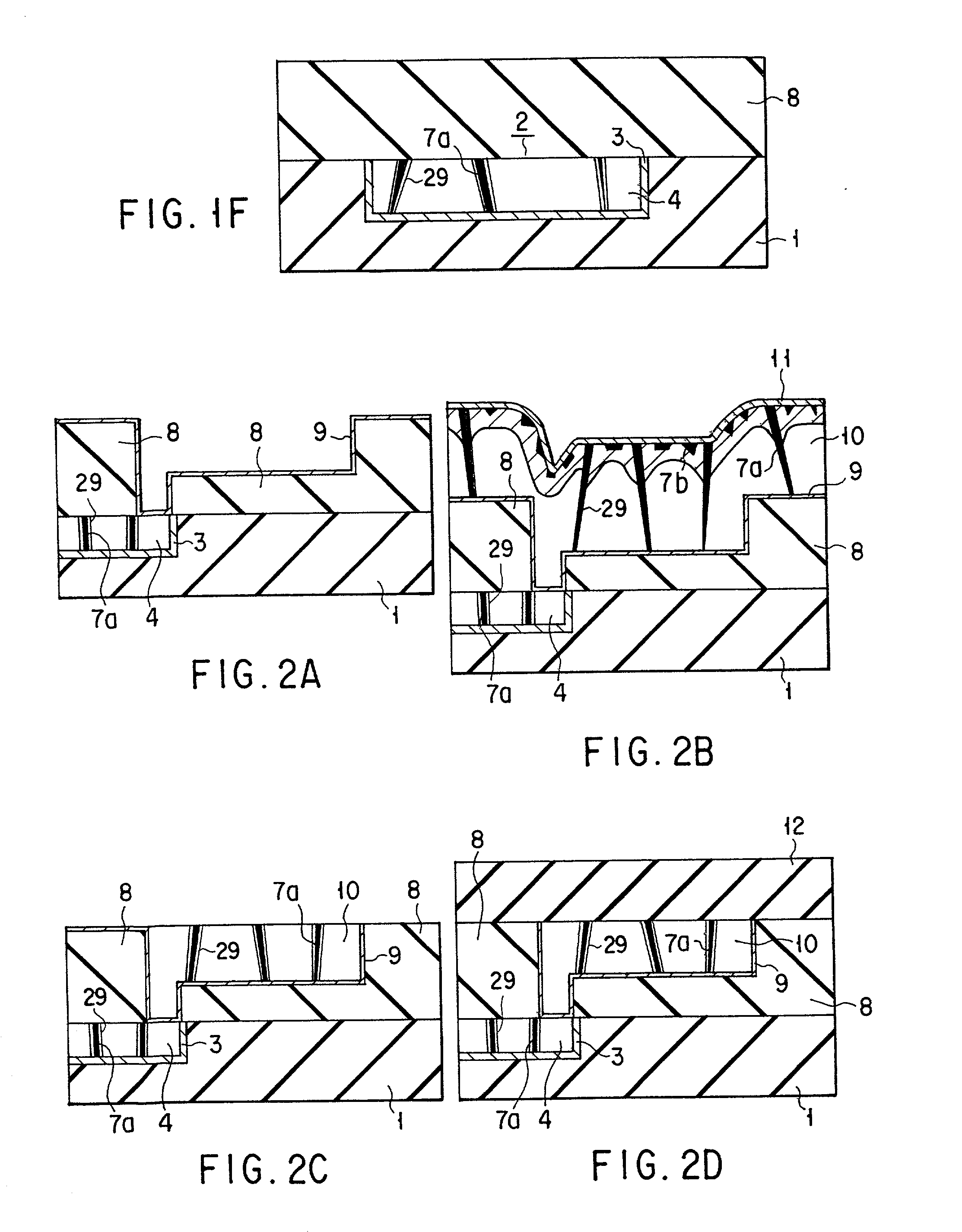Semiconductor device and manufacturing method thereof
a semiconductor and semiconductor technology, applied in the direction of semiconductor devices, semiconductor/solid-state device details, electrical devices, etc., can solve problems such as serious problems and interconnection problems, and achieve the effect of increasing interconnection resistan
- Summary
- Abstract
- Description
- Claims
- Application Information
AI Technical Summary
Benefits of technology
Problems solved by technology
Method used
Image
Examples
first embodiment
[0030] (First Embodiment)
[0031] Before explanation of embodiments of the present invention, the problems of a conventional equivalent the inventors have found will be described.
[0032] The mentioned forming method has the following problem: the diffusion permits Cu to appear in solid solution and precipitate at high concentration not only in the Al crystal grain boundary but also within the Al crystal grains, resulting in an increase in the resistance of the interconnection.
[0033] The precipitation of Cu in the Al crystal grains takes place as a result of the formation of AlCu compounds in defects at the surface of the Al interconnection caused in embedding the Al interconnection by CMP techniques, which causes the problem of increasing the interconnection resistance.
[0034] The precipitation of Cu in the Al crystal grains prevents a sufficient amount of Cu from precipitating in the Al crystal grain boundary, suppressing the formation of a diffusion barrier layer, which prevents EM re...
second embodiment
[0067] (Second Embodiment)
[0068] By the manufacturing method explained in the first embodiment, a semiconductor device having the structure of FIG. 1F is formed. The Cu film forming temperature is changed to 400.degree. C. Next, pads are made in a passivation film 8 by PEP and RIE techniques and thereafter assembling is done. Finally, an aging process is carried out for 15 hours. Namely, at the final process after the assembly, the aging process is performed.
[0069] The inventors formed specimens at various temperature of the aging process (aging temperatures) in the above manufacturing method and measured the interconnection resistance of the Al interconnections for each specimen at room temperature by a four-terminal method. Furthermore, the inventors evaluated the EM resistance of the Al interconnection for each specimen by a conducting test at 225.degree. C. with 2 MA / cm.sup.2. The results are shown in Table 2. The EM test interconnection has both its ends terminated by a W via.
2...
third embodiment
[0075] (Third Embodiment)
[0076] FIGS. 2A to 2D are sectional views showing a method of manufacturing semiconductor devices according to a third embodiment of the present invention. In FIGS. 2A to 2D, the same parts as those in FIGS. 1A to 1F are indicated by the same reference symbols and a detailed explanation of them will not be given.
[0077] First, the steps of FIGS. 1A to 1E in the first embodiment are carried out. The Cu film forming temperature is set to 400.degree. C. After the substrate temperature has reached about 400.degree. C., the formation of a Cu film 6 is started. The other conditions are the same as those in the first embodiment. As explained in the first embodiment, it is desirable that the Cu film forming temperature should be 150.degree. C. or above but 400.degree. C. or below, preferably 250.degree. C. or above but 350.degree. C. or below.
[0078] Next, as shown in FIG. 2A, a via hole and an interconnection groove connected to the via hole are made in a passivation...
PUM
 Login to View More
Login to View More Abstract
Description
Claims
Application Information
 Login to View More
Login to View More - R&D
- Intellectual Property
- Life Sciences
- Materials
- Tech Scout
- Unparalleled Data Quality
- Higher Quality Content
- 60% Fewer Hallucinations
Browse by: Latest US Patents, China's latest patents, Technical Efficacy Thesaurus, Application Domain, Technology Topic, Popular Technical Reports.
© 2025 PatSnap. All rights reserved.Legal|Privacy policy|Modern Slavery Act Transparency Statement|Sitemap|About US| Contact US: help@patsnap.com



